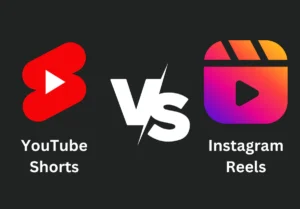Facebook, Twitter, Instagram, Snapchat, TikTok & Whatsapp
These are the world’s biggest social media platforms in terms of monthly active users. As we all know Indians are the largest user base for most of these platforms. But there is something else that you might have noticed here. There is not a single Indian social media platform on this list.
Why is it that a country with the world’s largest population and second-largest online population has failed to build a social media platform of its own?
There is clearly a huge opportunity, but why have Indian entrepreneurs ignored it? The truth is, they have tried. Remember Hike Messenger? It was a WhatsApp competitor. It even had a hundred million users at its peak. But after fighting a lost battle with WhatsApp for almost a decade, the app was shut down in 2021. Then there is Mohalla Tech, the company that owns both Sharechat and Moj. They have over 325,000,000 monthly active users combined. But the company is on the verge of running out of money. Then there is a whole graveyard of short video apps, like Chingari, Mitro TV, Roposo, Bolo India, and Josh. They had a fabulous run after the ban on TikTok in 2020. But today, some of them have shut down, and others have pivoted and there are a few that are still using the fuel to fight a losing battle, which, by the way, has already been won by Instagram reels and YouTube shorts.

Now we will dive into the mythology of why the Indian Social Media platforms failed and what are the key challenges that anyone building in this sector faces.
When I look at the evolution of social media, I see that there are mainly two social media waves. The first one was in the early 2000s when the Internet was just becoming mainstream in countries like the US and many of the successful social media apps that we see today were launched during this time. Facebook, Twitter, WhatsApp, and Instagram. All of these apps were built in the first decade of this century, and all of them were built in the US. And the reason all these apps were built in the US was that there was an entire ecosystem for these apps to be built and grow, both in terms of talent and investment. And India at that time lacked both of these things.
Firstly, we did not have a startup ecosystem at that time and because of that, talented Indians who could build these apps were building them in the US, as that’s where they got the ecosystem to build them. Another important reason is that there was no market in India at that time. Less than 10% of Indians were using the Internet and because of these reasons, India completely failed to capitalize on the first wave of social media apps.
The second wave of social media began in 2016, not in the US, but in China. It started with the arrival of TikTok, which changed the face of social media forever and there were certain reasons why this happened in China. You see, by now, China had become the world’s largest digital market, with over 500 million smartphone users, which was twice the amount of US smartphone users. Also, China has been trying for more than a decade to compete with the US products and they finally succeeded with TikTok. TikTok’s growth was unprecedented. It became the fastest app to get to 100 million users in just 9 months and by 2020, it had 700 million monthly active users. And Chinese users alone were not responsible for that. TikTok also became a big thing in India. Out of these 700 million users, 150,000,000 of them were in India.

TikTok was spreading like wildfire in India until the government decided to ban the app in the country and suddenly there was a vacuum. These 150,000,000 users did not have a platform to satisfy their need for short videos. This was a fertile ground for Indian entrepreneurs to build these apps for Indians. By now, India had become the world’s third-largest startup ecosystem. We had entrepreneurs who were building billion-dollar tech companies and VCs who were signing big checks every year for less than 10% of our population using the Internet. In 2010, more than 40% of Indians were now using the Internet. So, the market had expanded as well. And it seemed that India could very well ride this second wave of social media. As soon as TikTok was banned, Indian entrepreneurs rushed in to build India’s version of TikTok. A company named Mohala Tech built their version of a short video app, Moj, in just 30 days.
Within no time, Google’s Play Store was crowded with short video apps, each of which wanted to be the next TikTok and the growth of these apps witnessed during this time, was phenomenal. Trell got 12 million downloads in the next five days. After the ban, another app, Mitro TV, claimed that their daily traffic had grown eleven times and then there was Roposo, which added 22 million users in only two days. This growth got VCs excited as well. All of these short video apps were getting big funding. They invested more than $3 billion in Indian short video apps in the year 2020 alone. But once the early euphoria had died down, reality started to set in. See, what had happened was these companies had built a TikTok clone and managed to use the VC money to acquire as many users as they could. But that was all they had built a clone.

What set TikTok apart was its impressive AI recommendation engine that was able to give the users personalized content and pick up on trends that could go viral. That was the reason users were hooked to TikTok and were on average spending 1 hour every day on this app. But Indian short video apps had failed to innovate. They had just put together apps that looked like TikTok but performed nothing like it and it did not take the users long to realize it as well. Once they did, engagement and growth on these apps stalled. Daily active users and downloads have been declining since January 2021 and this lack of innovation was also the reason for the next big problem.
The problem of monetization. You see, because of the bad tech and user experience, the users were not sticking to these platforms. They were using multiple apps at the same time. Same was the true for creators. Famous creators were creating the content and posting it on all these apps and because of this lack of trust, brands were also staying away from these apps. So, while these companies were spending big money to bring users, they were not making any money from these users. Let me give an example to illustrate how bad the problem was. Mohala Tech, which runs ShareChat and Moj, claims to have more than 300 million monthly active users. In FY 23, the company spent 4693 crore rupees and their revenue was only 540 crore rupees, which means they lost more than 4000 crore rupees just last year. According to the cap table, Mohala Tech only has a Runway of less than six months before it runs out of money and by now, most of these apps have realized that they cannot make any money out of it. So, what are they doing? Some of them have shut down quietly, while others are changing their business model. Chingari has now turned to adult content to make money, and that strategy has worked for them since they pivot. They are now among the highest-grossing apps on Google’s Play Store in India. Another app, Mitro, made a pivot to video editing in 2021 and the ones who remain are trying very hard to become sustainable. Now, because of funding winter, these apps are not getting any outside money. So, they’re finding new ways to monetize. As for the creators and users, they have moved to Instagram reels and YouTube shorts, as these apps have better user experience for viewers and better tools for creators to make content.

So, what are our learnings from this?
- The first key learning is to be innovative. Indian social media platforms had failed at innovation. They thought that they could use the VC money to first acquire the users with something that looked like TikTok, and then use the same money to hire talent to build their tech. But before they could do it, users had already grown tired of their platforms. All these short video apps were similar to each other and they had no differentiation. Customers don’t stick around unless they see something unique. TikTok had set itself apart from day one. They created the entire short video category and then made sure it offered the best experience to their users with personalized content. Their growth was just a by-product of their differentiation.
- The second lesson is to focus on building a sustainable business. See, VC money is there to give you an initial push and to fund some of your experiments. But ultimately, if there’s no strategy in ways to make money, the future of your business will be uncertain. Just look at Sharechat. They’ve raised $1.7 billion, but have failed to build a sustainable business and are now on the verge of running out of money.
I hope you like the above blog, and share it in your groups, so that everyone learns something from it. Keep visiting our site to stay updated & stay informed.
Hat’s off to your research, Thanks for the valuable content.
I’m really impressed along with your writing skills as neatly as with the layout in your blog. Is that this a paid subject or did you customize it yourself? Anyway stay up the excellent quality writing, it’s rare to peer a nice blog like this one today!
You said it perfectly.!
meilleur casino en ligne
You said it nicely..
casino en ligne
Wow loads of helpful tips!
casino en ligne
Amazing all kinds of great facts.
casino en ligne francais
Helpful postings With thanks!
casino en ligne
Fine info Many thanks.
casino en ligne francais
Excellent write ups Appreciate it!
meilleur casino en ligne
You actually reported that adequately.
casino en ligne
Awesome facts, Thanks a lot!
casino en ligne
You’ve made your point!
casino en ligne France